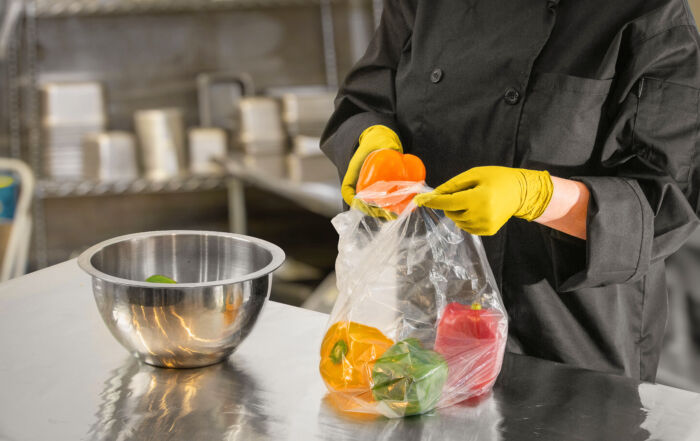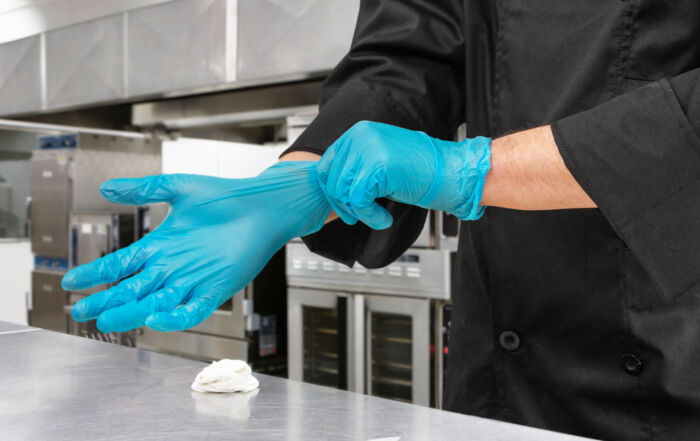Ensuring Food Safety in Emergency Foodservice Operations
Last week, many of us across the United States watched in disbelief as the southeastern portion of the United States was ravaged by Hurricane Helene. Food safety in emergency foodservice operations is not just about your operation, it’s about protecting your community, your friends, and your family. The importance of food safety in emergency situations has never been more apparent. As communities in Florida and North and South Carolina now struggle with power outages, disrupted supply chains, and damaged infrastructure, business owners are often not only dealing with personal and family matters, but also trying to keep their business operational, too.
Many of us have friends, family, and colleagues who are currently being impacted by the effects of Hurricane Helene, or other widespread disasters such as flooding, tornados, and even wildfires. In times of crisis, here are some considerations on how to navigate food safety effectively during these critical times.
Determining when a foodservice operation can reopen in an emergency setting involves several critical factors. First, ensure that the building is safe to enter. This may involve inspections by local authorities to check for any damage from flooding, storm water surges, or wind damage. Confirm that essential utilities (water, electricity, gas) are restored and functioning properly. Be sure to visit with your local health department. They can confirm the availability of potable water and can assist with a re-opening inspection if required.
Before reopening, thoroughly clean and sanitize all kitchen areas, equipment, and utensils to eliminate any contamination risks. Pay special attention to areas that may have been exposed to floodwater or other hazards.
Emergencies often disrupt the normal supply chain, leading to shortages of ingredients and essential resources. We saw this as a widespread issue during the COVID pandemic and regionally we see it now after the hurricane. As soon as you are able, evaluate your current inventory levels, including perishables, non-perishables, and essential supplies. Based on what you have available, explore the possibility of creating a limited menu using available ingredients. Focus on dishes that require fewer components and can be made with what’s on hand. Identify items that need to be prioritized for use based on expiration dates.
Managers of foodservice operations in any area that has been devastated by a natural disaster face unique challenges in ensuring the safety and quality of the food they provide.
Power outages can compromise refrigeration. If your operation utilizes refrigerator and freezer logs, continue to document temperatures, if you can, even while the power is out. While large walk-in units might not maintain temperature, other freezers, such as reach ins and chest freezers might maintain their temperature, even during a multiday power loss. Maintaining logs of actual temperature is one of the only ways you might be able to ensure that the food remains safe to consume. If frozen foods thaw, do not refreeze them unless they remain below 40°F. Instead, cook them immediately.
In an emergency, clear communication is vital. Be transparent about menu changes due to supply constraints. Inform customers about food safety measures in place to assure them of their health and safety. Stay updated on health guidelines from local authorities and relay this information to your staff and customers. This fosters trust and encourages compliance. Remember, the health of your customers and the reputation of your establishment depend on your commitment to safety, even in the most challenging times.
For a full checklist on reopening your establishment, check out our FoodHandler resource created for this very type of event. It will help you through the decision-making process to determine if you should open, and then how to plan, market, communicate, staff, and clean/sanitize your operation in preparation for re-opening.
Managers of foodservice operations in any area that has been devastated by a natural disaster face unique challenges in ensuring the safety and quality of the food they provide. The lessons learned from any natural disaster highlight the critical need for having solid plans in place and a strong culture of food safety that resonates throughout your operation to effectively protect the food supply and public health during crises situation. If you need to dust off, rejuvenate, or even create your food safety emergency plan, check later this month for our second blog which will address that very topic. Risk Nothing.
READ MORE POSTS
Dry Storage Sanitation: The Often-Overlooked Foundation of Food Safety
When you think about sanitation as a foodservice operator, you might think about food production [...]
Resolve to Protect: Why This Year’s #1 Priority Should Be Food Safety
The new year presents foodservice managers with a wonderful opportunity to reset, refocus, and recommit [...]
The Second Wave: Food Safety Myths That Deserve Your Attention
Walk into any commercial kitchen, and you'll find hardworking staff following protocols they have learned [...]
What Your Staff Gets Wrong About Food Safety (And How to Fix It)
Earlier this month, I was mindlessly scrolling through Facebook when I came across a post [...]










